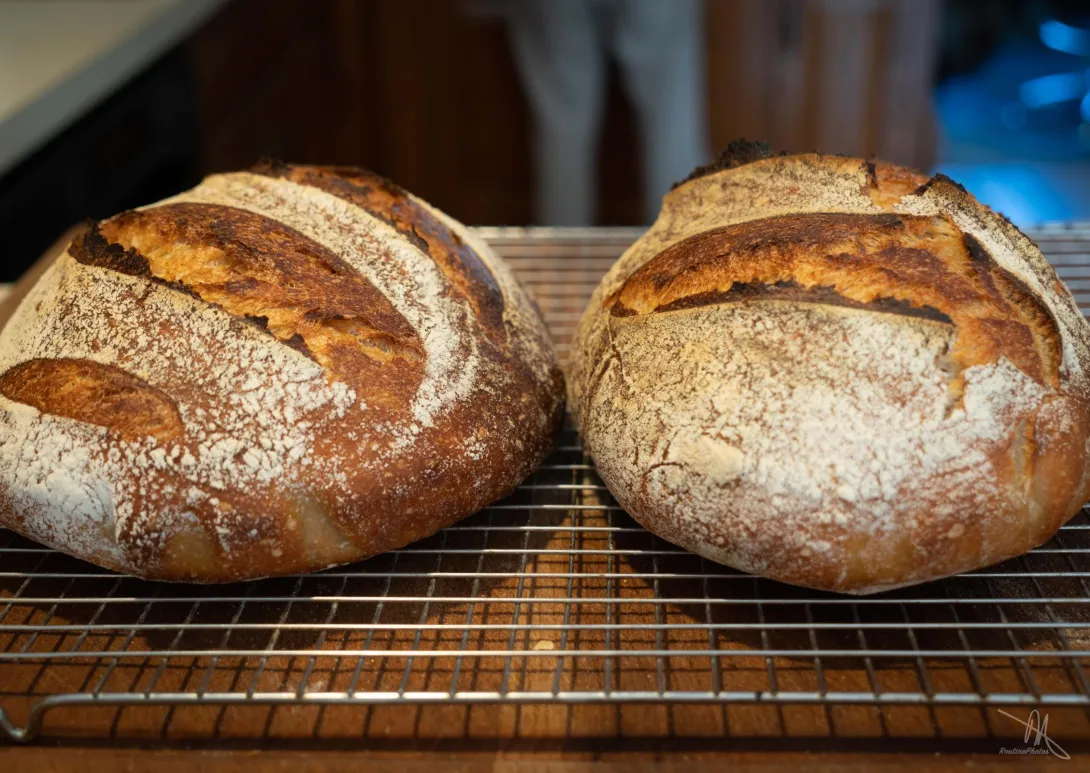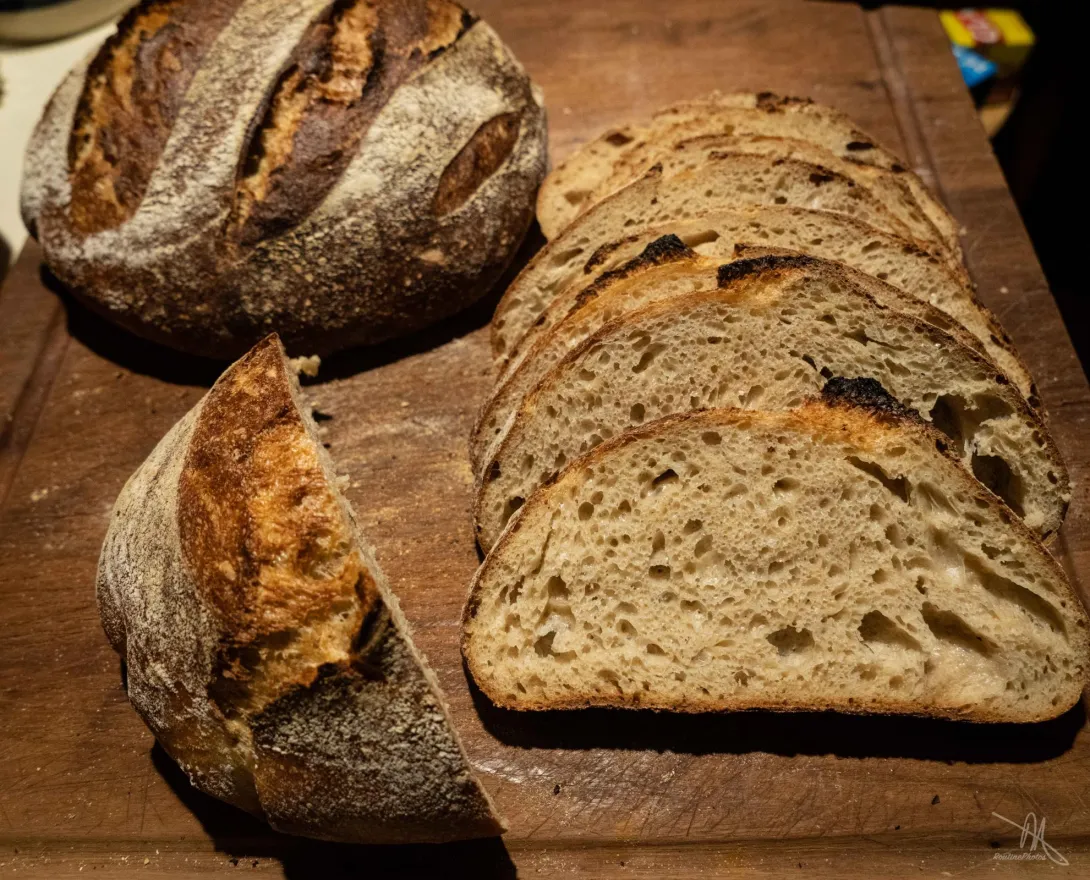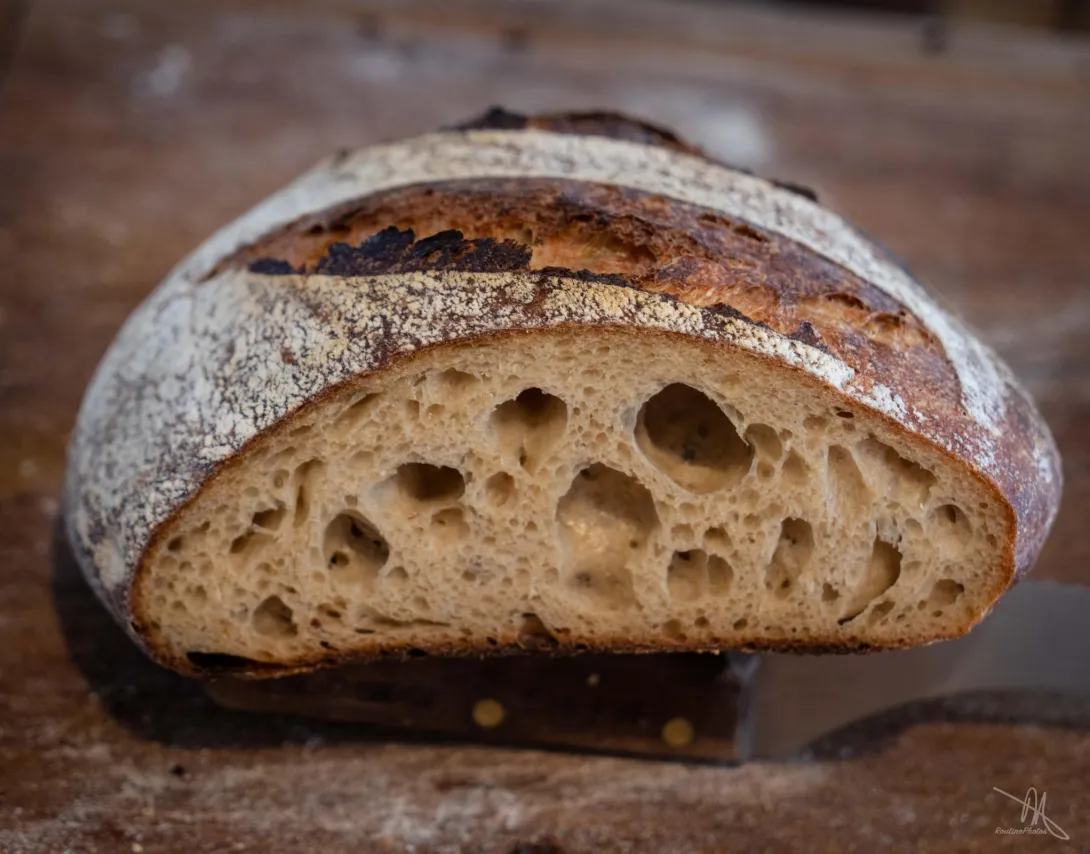I have a dutch oven which is fairly deep (not like a combo cooker) and it's always a pain to transfer and score the dough from the banneton to the oven without touching the sides. I first have to dump it on the countertop, and then lift it with my hands and move to the pan and then score it once it's inside. It feels like this damages the dough somewhat as well. It would be so much easier if I could just dump the dough directly into a cold oven, score and put it in a preheated oven. Would this work?
How many minutes extra would I need to cook? I typically do 20 minutes at 250C with lid on, then 230C 20 minutes with the lid off.
There are a number of test showing that the results of cold vs. hot pot are not that different. Although many might disagree.
You could tip the dough out of the banneton onto parchment paper. Then using the parchment paper as a sling you could lower it into the hot pot. If any paper is out of the pot just fold it out and place your cover on top.
Dan
I've only tried using cold DO a few times, and per what DanAyo said, and with the caveat that I haven't compared side by side, I haven't seen a significant difference. Why not give it a try and judge for yourself?
Fwiw, I've also tried using parchment, and it makes a visible difference. Since it doesn't fully conform to the shape of the DO, the shape of the loaf becomes irregular where the parchment hasn't sat or been pushed right up against bottom and sides of the DO. The result isn't grotesque by any means, but it's clearly not the same as you'd get without the parchment.
I cut out rounds of parchment paper that fit the bottom of my pots. They are reusable for quite a few more times. The purpose of them is to prevent sticking so this really doesn’t help with placing the dough in a hot Dutch oven. I usually bake seam side up but if I score my loaves, I do it on the counter and then lower the loaf into the pot by my finger tips. Baking straight from the fridge gives the dough enough stiffness that I can do that. Hope this helps.
Yes this seems easier to do when the dough is out of the fridge, then it's quite stiff and easier to move around. Otherwise when you lift it it can fold in half.
The dough also scores easier when cold.
Thanks, I'll try with adding 5 minutes to baking time, assuming this is before taking the lid off?
depending if you want your loaves to be a bit lighter or darker. You can split the difference too although I haven't done so intentionally.
I use a cold dutch oven all the time. One thing to watch for is a burnt bottom to the loaf as the heating element below works to bring the dutch oven up to temperature. To avoid this I use the pure convection mode in my oven but I think that a baking sheet on a low shelf should also work to shield the dutch oven from direct heat.
As for time, I usually do 25 minutes closed at 450F and then 25 minutes at 425F with the lid off.
I use an old pizza stone as a shield almost all the time. It normally resides in my oven, so mentioning this slipped my mind.
I gave this a try today and unfortunately the bottom of the bread completely stuck to the oven even though I used some polenta on the bottom of the pot and on the top of the dough. It was a very wet dough (80% hydration).
I'm quite frustrated trying to find a good way to transfer loaves into the DO. My basket is 24cm and so is the oven. It seems like I should get a large combo cooker style pot which will make it much easier.
I use a sheet of parchment but I tear it to have two long ends with the sides even with the bread. This avoids the creased paper problem. Have been doing this for years and never a stuck or burned loaf. At 450-475 putting corn meal etc in the bottom of the dutch oven is a great way to get burned crumbs !! Make a parchment sling....it works flawlessly. Also when doing cold pot in to either cold oven or preheated oven , I use 475 for 40 min and 5-7 with lid off. Beautiful crust.
No I didn't and probably should have! What do you mean by "I tear it to have two long ends with the sides even with the bread." ?
the Greek letter phi.....essentially 2" wide " handles on each end and then the circle in the middle. I just carefully tear the sheets of paper. I bought a couple thousand sheets a few years ago and still have a lot !!! Got them off of ebay from a seller. It isn't the most expensive paper and one can't use it more than once as it browns a bit and gets brittle but it sure works great to lower and get the loaves back out and I have never had a burned or stuck loaf. My DO's are about 100 yrs old so they are well seasoned....me I am not quite that old but seasoned also :) Good Luck !
ah I get it :) This sounds like a good idea! Do you flip directly into the dutch oven, or first on the countertop and then carry it inside using the "handles" ?
Paper on banneton, hold tight and flip , lift banneton off. Tear paper and Brush extra flour off of paper. Take pot out of oven remove lid lower bread into pot , lid on. Works great! Be careful on removal at end of bake as cheap paper can tear depending on how brittle it gets/ bake temp and time. Good luck and post pics?
This time the dough was quite strong so I could just lift it up with my fingers and place gently into a preheated pot, so I didn't get to try this technique. It seems more of an issue when the dough is weak and flattens out when I put it on the countertop.
This was a 72% hydration, 20% whole purple wheat, 4% rye (from starter) sourdough..
And it has great crumb! This just proves that you don’t need to go to super wet dough to get a nice and open crumb. I got off that wagon long ago when I decided to ignore water amounts in sourdough recipes and go with a consistency of the dough that I felt comfortable with. It’s funny because when I calculate the hydration after, it tends to be around 74%, sometimes higher if I use thirsty ingredients like porridge. 74% might sound high if you aren’t using Canadian flour but for me, it holds its shape quite nicely.
Once again, you have a gorgeous loaf! Well done!
Yes my previous loaf was 80% and that was quite difficult to work with. It's better to increase it gradually, I mostly followed Trevor Wilson's advice without working the dough too much and it worked really well! Could have proofed a little longer but was afraid it would collapse when transferring.
gorgeous loaf!! Beautiful color,shape and crumb! Great job. The less is more philosophy once again proves true.
good luck
Leslie
I too was having problems transfering from banneton to a hot dutch oven without the loaf dropping onto its side or other catastrophes.
So now I first dump the loaf onto a kitchen towel. I score it while still on the towel, and THEN quickly lift it with my hands and drop it into the hot dutch oven..... Haven't noticed any problem with how it turns out... still rises just fine, nice ears in the crust, etc.
Haven't tried the cold dutch oven... I think I will just for fun.
This bake was 25% fresh milled einkorn and the rest BFat 75% hydration. Bulk for 4.5 hours (about 40% rise) then cold retard overnight at 45 degrees. One loaf was baked in a cold combo cooker in a hot oven and the second was in the same combo cooker that was now preheated from the first bake. The cold baked loaf (left) spread a bit more, with less loft but clearly more open crumb (3rd photo) . The hot baked loaf had more loft but less open crumb (2nd photo). I purposely did not push the bulk far on this so it might have been a bit under-proofed. My takeaway is that cold dutch oven in pre-heated oven works well, but probably best if the loaf is a bit on the under proofed side. If pushing limits on proofing, might spread more than spring as happens even in a hot oven. But if I want bigger holes, don't push the proof and use a cold combo cooker.
Image

Image

Image

I have a weird question. Did any of you who bake in cold dutch oven ever do the last rise directly in the dutch oven? With parchment underneath? I'm just brainstorming here, wondering if that would work and eliminate the degassing problem.
As a matter of fact, it is a constant source of debate. This thread, among others, may help you decide.
Happy baking.
Carole